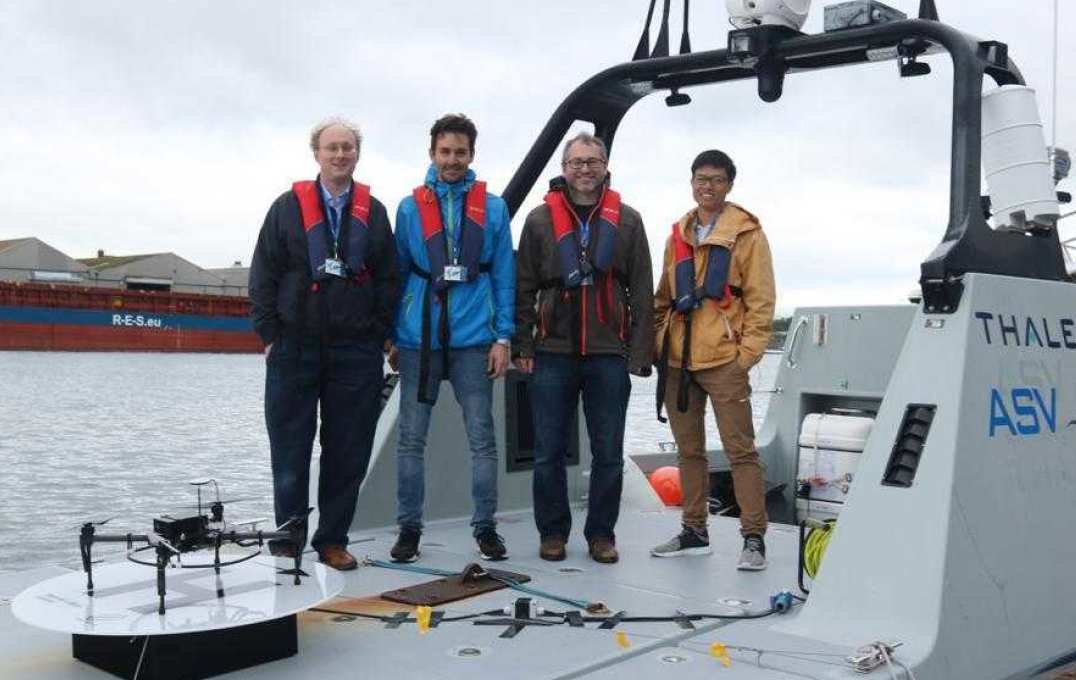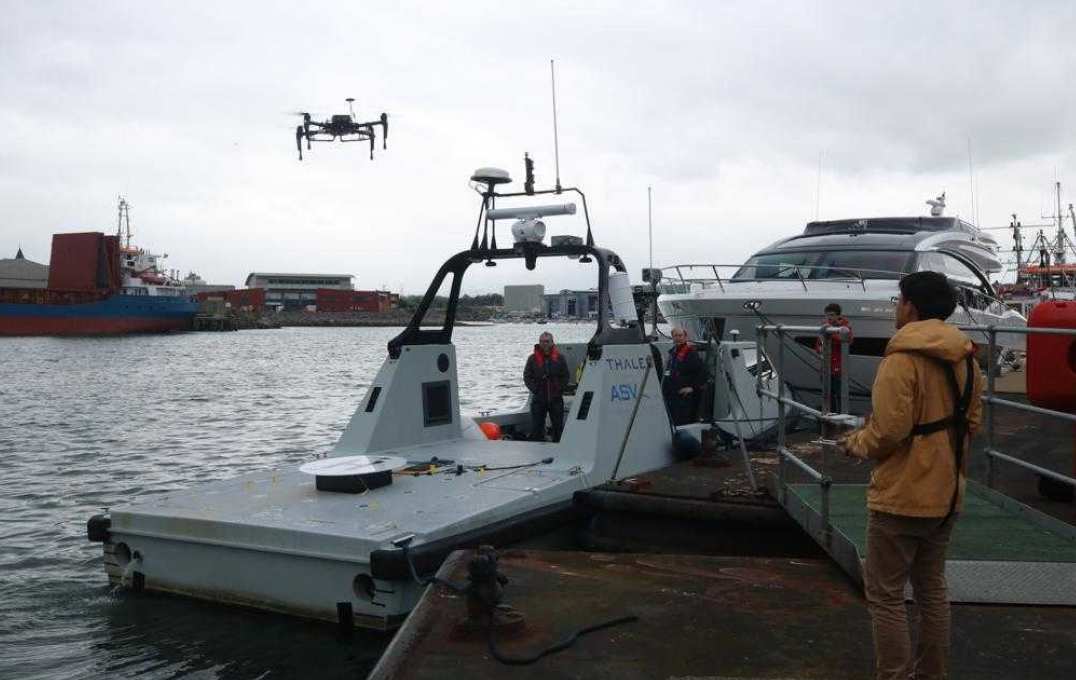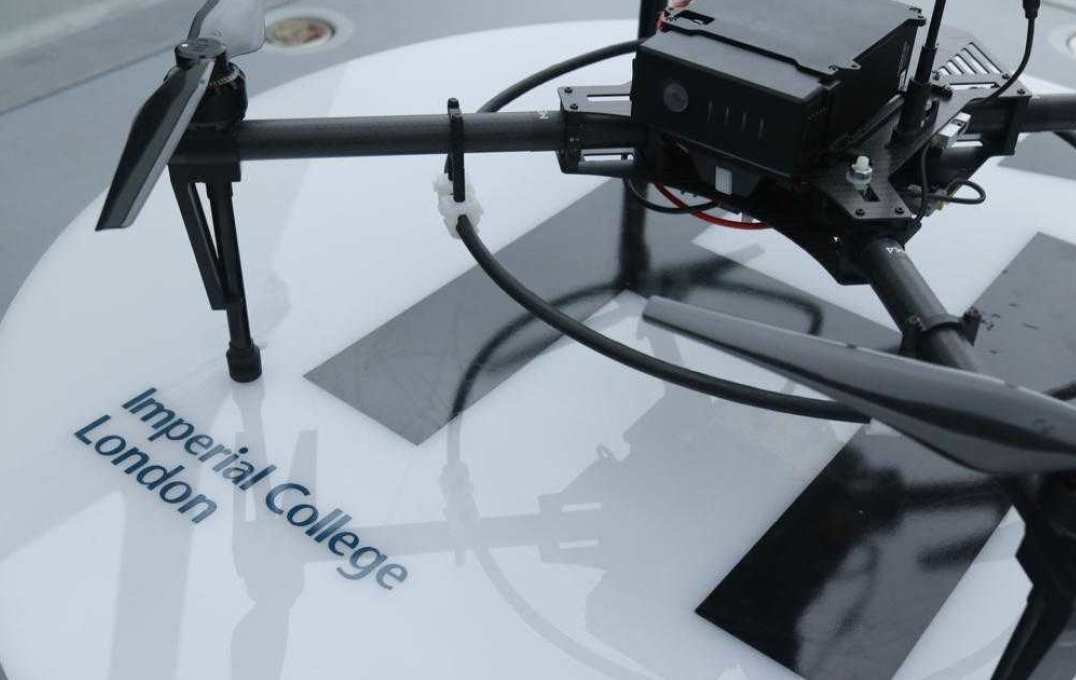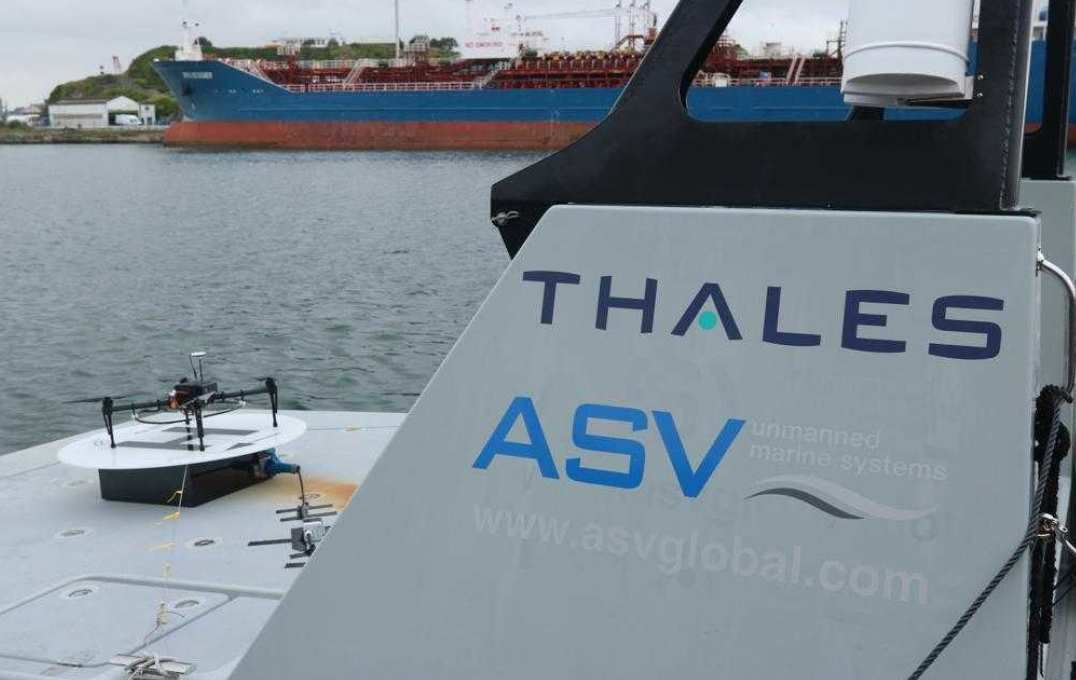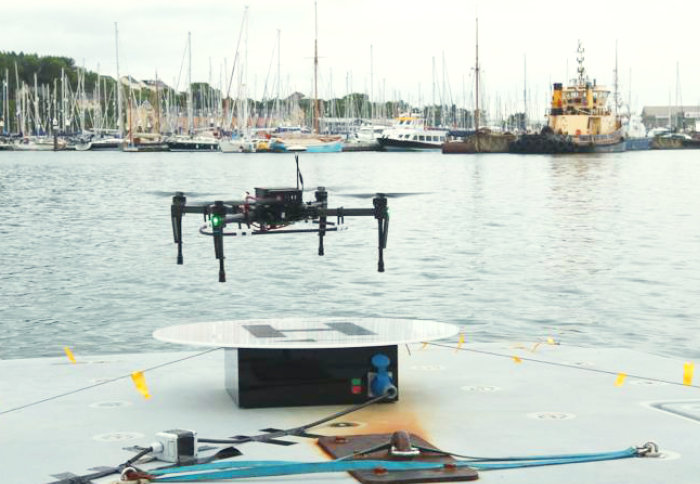

Researchers from the department’s Wireless Power Lab have successfully tested their wirelessly charged drone in a new environment – on the sea.
The team, led by Professor Paul Mitcheson and Dr David Yates, has just returned from Plymouth, where they have been testing the drone on the deck of an unmanned craft - Thales’ autonomous surface vessel Halcyon.
The uses of small drones, for example in surveillance, and search and rescue operations, are almost limitless - but the distance that a drone can travel, and the time it can stay in the air, is limited by the availability of power and re-charging requirements. Wireless power transfer technology is proving to be the answer to these problems.
The drone was able to land on the Halcyon’s deck, and recharge itself automatically without being plugged in or having its batteries replaced by a human operator. Because Halcyon can also run without a crew, the drone can act as a reconnaissance vehicle, surveying areas from the sky, before the vessel moves to a new position. The drone can return to the vessel to recharge when necessary.
Back in 2016, the Imperial team demonstrated a highly efficient method for wirelessly transferring power to a flying drone based on high frequency inductive power transfer.
Professor Mitcheson explains that inductive power transfer is incredibly simple in principle, but quite tricky to make it work properly in real scenarios. "The concept will be known to many GCSE physics students. We run an AC current through a transmitting coil which creates an alternating magnetic field that links with the receive coil. This induces a voltage in the receive coil enabling energy to flow through the system. The trick is making it light-weight, efficient, and tolerant to misalignment between transmitter and receiver.”
“When done right, inductive power transfer can transfer energy over a distance of over one transmit coil diameter, making it practical in many scenarios from charging drones to electric scooters. This demonstration with Thales, made possible through an impact acceleration grant from the UK Power Electronics Centre and internal Thales funding, has allowed us to showcase the capability and maturity of our technology, and I'm hugely satisfied with what the team has achieved."
The team are now taking their successful technology into a new spin-out company - Bumblebee Power - and will start by applying it to drones and to light-weight vehicles such as scooters.
The Bumblebee founding team consists of Prof Mitcheson and Dr Yates who first met in 1997 as undergraduates in the department, as well as several existing and past members of the Wireless Power Lab who bring IP and business experience, including Sam Aldhaher, George Kkelis, Juan Arteaga, Chris Kwan and Lingxin Lan.
Dr Yates says: "We’re hugely excited to be spinning this technology out of the College into our new venture. We have been working on this for a number of years, with research funding from sources including EPSRC, the EU and the UK Government. It’s great to see it come together and to be able to drive it to the next stage."
It’s a busy and exciting time for the Wireless Power team, as they are also currently organising an IEEE conference. Wireless Power Week www.wpw2019.org will be held in Savoy Place, London next week.
Article text (excluding photos or graphics) © Imperial College London.
Photos and graphics subject to third party copyright used with permission or © Imperial College London.
Reporter
Jane Horrell
Department of Electrical and Electronic Engineering

Contact details
Tel: +44 (0)20 7594 6263
Email: j.horrell@imperial.ac.uk
Show all stories by this author

